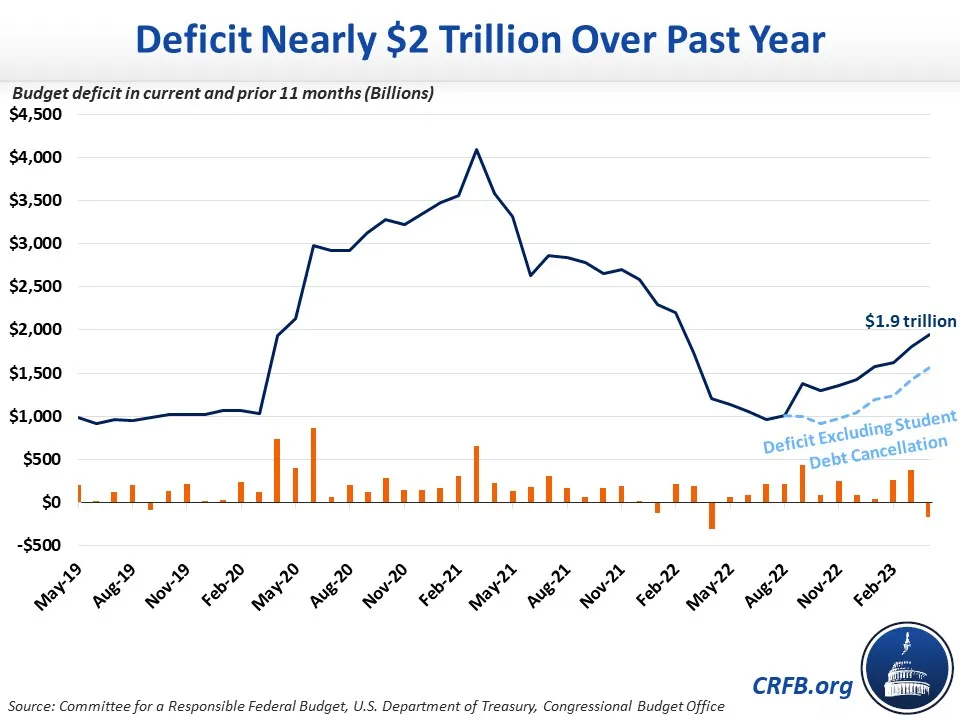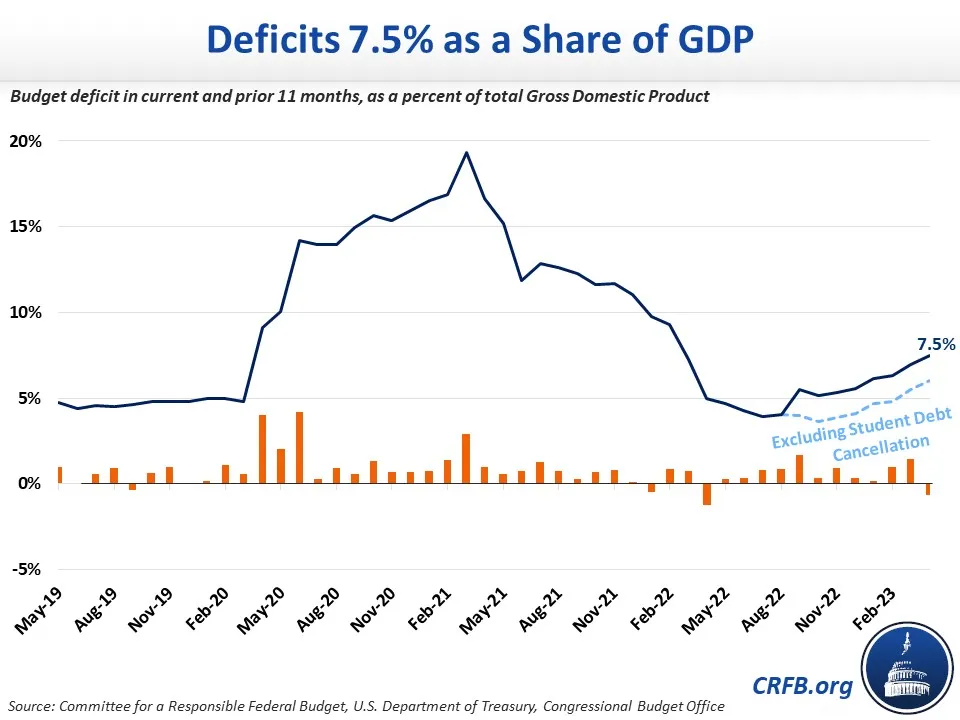Deficit Nearly $2 Trillion Over Past Year
The federal government has run nearly $2 trillion in deficits over the past year, based on monthly data from the Congressional Budget Office (CBO). Monthly deficits from May of 2022 through this April totaled $1.942 trillion – which is almost double the 12-month rolling deficit from last summer and also nearly double the deficit immediately prior to the pandemic.

The rolling deficit has been growing since November of last year, driven by rising nominal spending and declining revenue. April tax collections were particularly weak, resulting in a one-month surplus of only $173 billion this year (or $99 billion adjusted for the effects of timing shifts), compared to $308 billion ($373 billion adjusted for timing shifts) in April of 2022. When comparing both surpluses for timing shifts, this year's April surplus is just one-quarter of the April 2022 surplus.
As a share of the economy, deficits have totaled roughly 7.5 percent of Gross Domestic Product (GDP) over the past year – twice the rolling deficit from June of 2022 and more than 50 percent higher than just before the pandemic.

Although we expect the 12-month rolling deficit to decline briefly in September when the one-time deficit effect of student debt cancellation is more than a year behind us (particularly if the Supreme Court rules it illegal), structural deficits will continue to trend upward.
High and rising deficits put more pressure on inflation, make the Federal Reserve's inflation-fighting efforts more challenging and costly, slow economic growth, make it harder to respond to new emergencies, create geopolitical risks, and put the national debt on an unsustainable long-term path. Policymakers should enact deficit reduction to begin to stabilize the nation’s finances.


